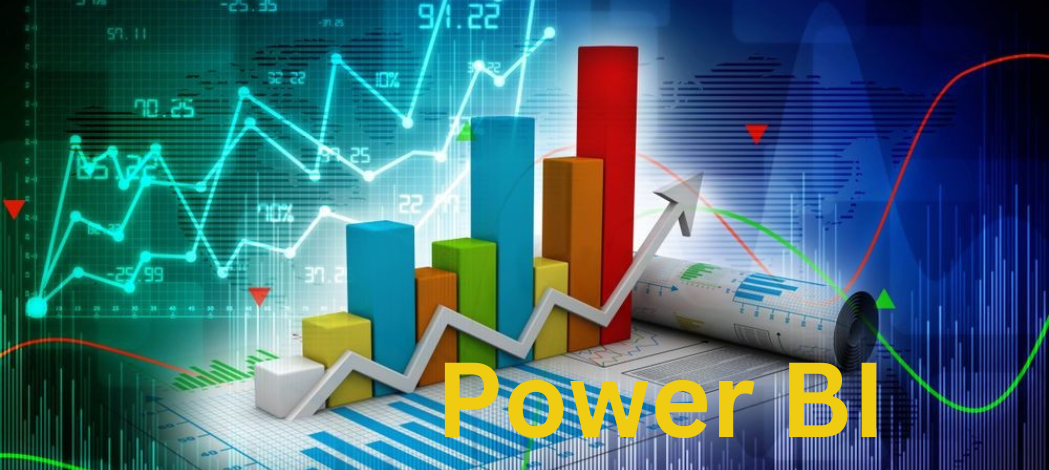
Unlocking the Potential of Data with Power BI: A Comprehensive Guide
In today’s data-driven world, the ability to interpret and visualize data is a critical skill for businesses of all sizes. Microsoft Power BI stands out as one of the leading tools in this realm, offering powerful capabilities for data analysis and visualization. In this blog, we'll explore what Power BI is, its key features, and how you can leverage it to unlock the potential of your data.
-
What is Power BI?
Power BI is a business analytics service by Microsoft that provides interactive visualizations and business intelligence capabilities with an interface simple enough for end users to create their own reports and dashboards. It connects to a wide range of data sources, simplifying the process of data preparation and analysis.
-
Key Features of Power BI
Interactive Dashboards: Power BI’s dashboards offer real-time data visualization, allowing users to interact with their data in meaningful ways. You can filter, highlight, and drill down into details to gain deeper insights.
Data Connectivity: Power BI supports a vast array of data sources, from simple Excel files to complex databases and cloud services like Azure, Google Analytics, and Salesforce.
Custom Visuals: Beyond the standard set of visuals, Power BI offers a marketplace where users can download custom visuals to enhance their reports. These visuals can be tailored to specific needs and provide unique ways to represent data.
Natural Language Q&A: With Power BI's Q&A feature, users can ask questions in natural language and get answers in the form of visualizations. This makes data exploration more accessible, even for those who aren’t data experts.
Data Transformation: Power BI includes Power Query, a data connection technology that enables you to discover, connect, combine, and refine data across a wide variety of sources. This means you can clean and prepare your data right within the tool.
AI Capabilities: Power BI integrates with Azure Machine Learning and includes built-in AI visuals like Key Influencers and Decomposition Tree, which help in predictive analysis and identifying key factors influencing your metrics.
How to Get Started with Power BI
-
Download and Install Power BI Desktop: Begin by downloading the free Power BI Desktop application. This is where you will create your reports.
-
Connect to Data Sources: Use the ‘Get Data’ feature to connect to your data sources. Power BI supports a wide variety of sources, ensuring that you can work with your data no matter where it resides.
-
Prepare Your Data: Utilize Power Query to clean and shape your data. You can remove duplicates, filter rows, and merge data from different sources to ensure your dataset is ready for analysis.
-
Create Visualizations: Drag and drop fields onto the report canvas to create visualizations. Customize these visuals to highlight the insights that matter most.
-
Build Reports: Combine multiple visualizations into a cohesive report. Use features like slicers and drill-throughs to make your report interactive.
-
Publish and Share: Once your report is ready, publish it to the Power BI service. Here, you can share your reports with others in your organization and even embed them into websites or applications.
Best Practices for Power BI
-
Data Modeling: Spend time on your data model. A well-structured data model can significantly improve the performance and usability of your reports.
-
Use Bookmarks and Buttons: These features can enhance the interactivity of your reports, allowing users to navigate and filter data more effectively.
-
Performance Optimization: Keep an eye on the performance of your reports. Use Power BI’s performance analyzer to identify and fix any bottlenecks.
-
Security: Implement row-level security (RLS) to ensure that users only see the data they are authorized to view.
-
Stay Updated: Power BI is continually evolving. Keep up with the latest updates and features to make the most of the tool.
Conclusion
Power BI is a versatile and powerful tool that can transform the way you interact with your data. Whether you’re a business analyst, data scientist, or a decision-maker, Power BI offers the tools you need to visualize and understand your data better. By leveraging its features and following best practices, you can unlock valuable insights and drive data-informed decisions in your organization.





